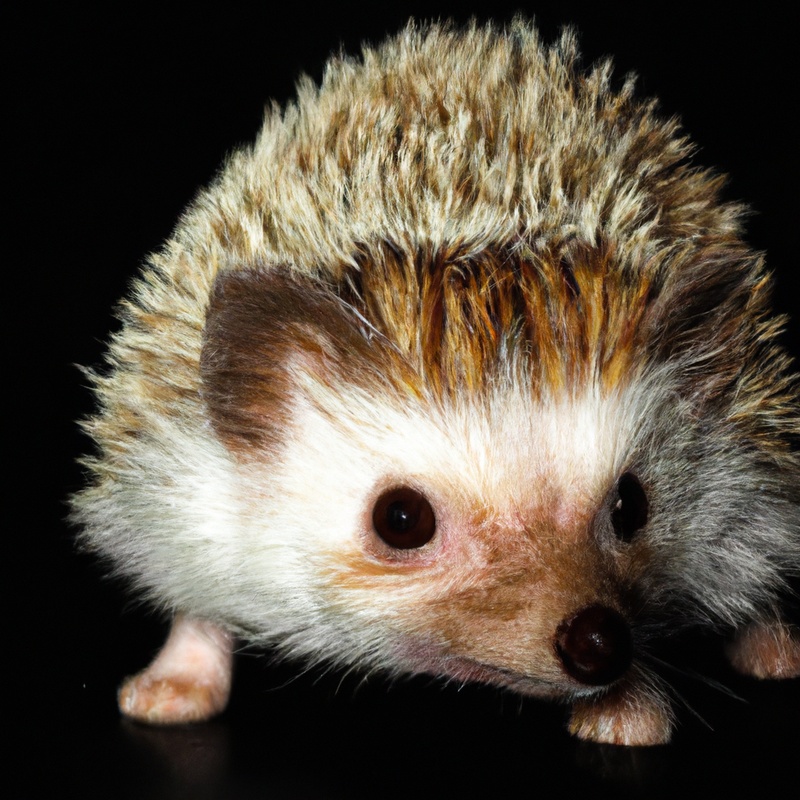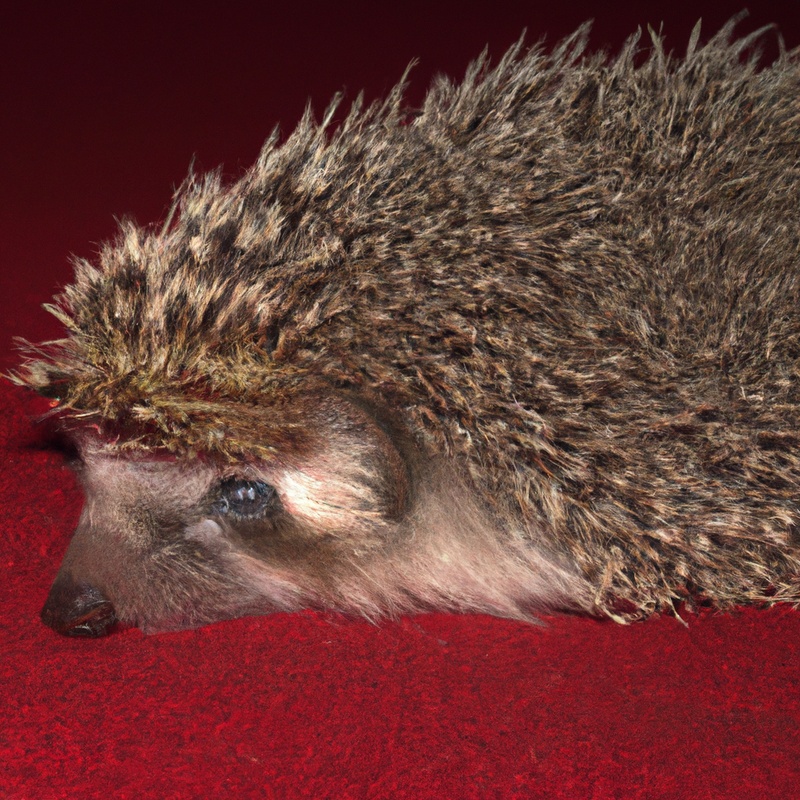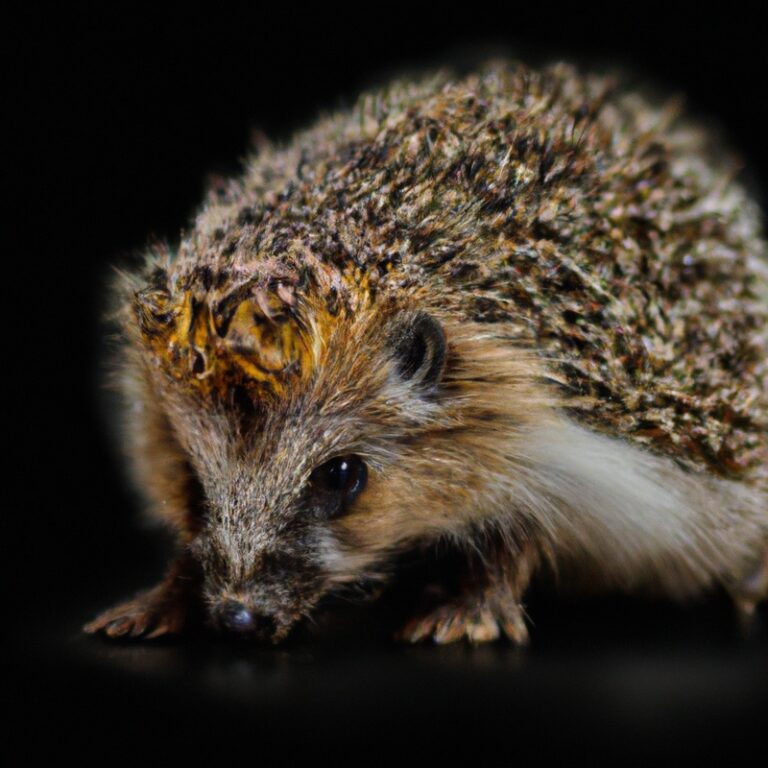What Is The Role Of Hedgehogs In Maintaining a Balanced Ecosystem?
Key Takeaways:
- Hedgehogs play a vital role in controlling the population of invertebrates in their habitats.
- Hedgehogs contribute to seed dispersal, aiding in plant regeneration and diversity.
- Hedgehogs serve as prey for larger predators, helping maintain the balance in the food chain.
- The decline in hedgehog populations poses a threat to ecosystem stability and biodiversity.
Do you ever stop to ponder about the intricate web of life that exists right in your own backyard?
It’s easy to overlook the small yet mighty players in our ecosystem, like the humble hedgehog.
These prickly creatures pack a big punch when it comes to maintaining a balanced environment.
From their diet and foraging behavior to their role as predators and prey, hedgehogs play a crucial role in the delicate balance of nature.
In this article, we’ll dive deep into the fascinating world of hedgehogs and explore how these charming critters contribute to the health and vitality of our ecosystems.
| Hedgehogs in Maintaining a Balanced Ecosystem | |
| Role | Description |
| Hunting | Hedgehogs primarily prey on insects, slugs, snails, and other small invertebrates, helping to control their populations and maintain a balanced ecosystem. |
| Gardening | Hedgehogs have a preference for gardens, as they provide a rich source of invertebrates. By foraging in gardens, they can help control pests and reduce the need for chemical pesticides. |
| Seed Dispersal | Hedgehogs eat various fruits and berries, and their digestive system helps in seed dispersal. By defecating in different locations, they play a role in plant propagation and biodiversity. |
| Prey for Predators | Hedgehogs serve as prey for various predators such as foxes, owls, and badgers. By maintaining the hedgehog population, they provide a food source for these predators and contribute to the natural food chain. |
| Habitat Creation | Hedgehogs create burrows by nesting in undergrowth, hedges, and log piles. These burrows provide shelter for other small animals and insects, contributing to overall biodiversity. |
Hedgehog’s diet and foraging behavior
Hedgehogs primarily feed on insects and other invertebrates, and they are known for their opportunistic foraging behavior.
Hedgehog’s dietary preferences
Hedgehogs have a varied diet, consisting mainly of insects like beetles, caterpillars, and earthworms.
They also eat small vertebrates such as baby mice and shrews.
Additionally, they may consume fallen fruits, nuts, and berries.
Water is obtained from the food they eat, so they rarely need to drink.
It’s important to note that while hedgehogs are considered insectivores, their diet can vary depending on their habitat and seasonal availability of food.

Impact of hedgehogs on insect and pest populations
Hedgehogs play an important role in controlling insect and pest populations.
These spiky creatures are natural predators of many garden pests, such as slugs, snails, beetles, and even small rodents.
By feeding on these pests, hedgehogs help to keep their populations in check, preventing them from becoming a nuisance or causing damage to crops and gardens.
Their presence in an ecosystem can help to maintain a balanced insect and pest population, benefiting both humans and the environment.
Role of hedgehogs in seed dispersal
Hedgehogs play an important role in seed dispersal within ecosystems. As they move around, the seeds can get trapped in their spines and fur.
When hedgehogs walk or forage for food, these seeds can become dislodged and fall to the ground in different locations.
This helps in the dispersal of plant seeds to new areas, contributing to biodiversity and the distribution of plant species. Hedgehogs may be small, but they have a big impact on the ecosystem by aiding in seed dispersal.
Hedgehogs as predators
Hedgehogs play a crucial role as predators in maintaining a balanced ecosystem. They help control prey populations and act as natural pest controllers.
Hedgehogs and their role in controlling prey populations
Hedgehogs play an important role in controlling prey populations in their ecosystem. As natural predators, they help maintain a balance by feeding on various small animals such as insects, slugs, and even small mammals.
Their diet includes both harmful pests and potentially destructive creatures, helping to keep their numbers in check.
Hedgehogs are particularly effective at controlling arthropod populations, which can be beneficial for gardens, crops, and other natural habitats. Their natural hunting instinct helps maintain a healthy and harmonious ecosystem.
Hedgehogs as natural pest controllers
Hedgehogs are effective natural pest controllers.
They have a voracious appetite for insects, slugs, snails, and other garden pests.
The spines on their back protect them from predators, and their sharp teeth help them capture and devour their prey.
By adding hedgehogs to your garden or green space, they can help naturally control pests without the need for harmful chemicals.
So, if you want a natural and environmentally-friendly way to keep pests at bay, consider welcoming hedgehogs into your yard.
Hedgehog interactions with other predators
Hedgehogs have interesting interactions with other predators in their ecosystem. They often encounter animals like foxes and badgers, who may try to prey on them.
Hedgehogs have a unique defense mechanism of rolling into a tight ball with their spines facing outwards, making it difficult for predators to attack them.
However, hedgehogs can also be prey for larger predators like owls and eagles. Overall, hedgehogs play a crucial role in maintaining the balance of predators and prey in their environment.

Hedgehogs as preys
Hedgehogs serve as prey for a variety of predators in the ecosystem.
Natural predators of hedgehogs
Hedgehogs, with their prickly exterior, are not completely invulnerable in the wild. They do have natural predators that pose a threat to them.
Some of the natural predators of hedgehogs include:
- Badgers: Badgers are known to be one of the main predators of hedgehogs. They can overpower hedgehogs with their strength and dig them out from their burrows.
- Foxes: Foxes are opportunistic hunters and hedgehogs are included in their diet. They rely on their agility and speed to catch hedgehogs when they encounter them.
- Birds of prey: Certain birds of prey, such as owls and falcons, have been known to hunt and feed on hedgehogs. They use their sharp talons and beaks to capture and consume their prey.
- Dogs: Domestic dogs, particularly those that have not been trained or socialized with hedgehogs, can pose a threat to them. Some dogs see hedgehogs as potential prey and may attempt to chase or harm them.
These are some examples of natural predators that hedgehogs may encounter in the wild. However, it is important to remember that hedgehogs also have defense mechanisms in place, such as curling into a ball and utilizing their sharp spines for protection.
Importance of hedgehogs in the food chain
Hedgehogs play a crucial role in the food chain.
- They are insectivores, feeding on a variety of insects like slugs, snails, and worms.
- By controlling the population of these pests, they help maintain a balance in the ecosystem.
- Additionally, hedgehogs are prey for larger predators, such as owls, foxes, and badgers.
- Their presence in the food chain ensures a healthy population of predators, promoting biodiversity.
Impact of hedgehog population decline on other species
The decline in hedgehog populations can have a significant impact on other species in the ecosystem.
- Insect populations can increase: Hedgehogs feed on insects, such as beetles and caterpillars. With fewer hedgehogs, these insect populations can grow unchecked, leading to potential crop damage and imbalances in the ecosystem.
- Predatory bird populations may suffer: Hedgehogs are an important part of the diet for predatory birds like owls and kestrels. A decline in hedgehog numbers can result in reduced food availability for these birds, impacting their survival and breeding success.
- Small mammal competition: Hedgehogs compete with other small mammal species for resources such as food and shelter. As hedgehog populations decline, other small mammals like mice and voles may face increased competition for these resources.
- Impact on plant life: Hedgehogs help to control slug and snail populations, which are known to damage plants. With fewer hedgehogs, slug and snail numbers can rise, leading to potential damage to vegetation and gardens.
Overall, the decline in hedgehog populations can disrupt the delicate balance of the ecosystem, affecting various species and their interactions.
Hedgehogs and habitat conservation
Preserving hedgehog-friendly habitats is essential for their conservation.
Hedgehogs as indicators of ecosystem health
Hedgehogs can serve as indicators of ecosystem health. As small, ground-dwelling mammals, they are affected by changes in their environment.
A decline in hedgehog populations can suggest problems such as habitat loss, pesticide use, and pollution.
Conversely, a healthy hedgehog population indicates a balanced ecosystem that can support biodiversity. By monitoring hedgehog populations and taking steps to protect their habitat, we can help maintain a healthy and thriving ecosystem for all species.
Hedgehog-friendly habitat management practices
To create a hedgehog-friendly habitat, here are some practices you can follow:
- Provide shelter: Leave sections of your garden wild with dense vegetation, fallen leaves, and log piles. Hedgehogs need places to hide, hibernate, and raise their young.
- Avoid pesticides: Use natural pest control methods instead of harmful pesticides that can harm hedgehogs and their food sources.
- Create access points: Install small gaps or holes in your fences to allow hedgehogs to move freely between gardens. This helps them search for food and find suitable mates.
- Provide food and water: Leave out shallow bowls of fresh water and hedgehog-friendly food, such as wet cat food or specially formulated hedgehog food.
- Reduce hazards: Clear away netting, litter, and other hazards that hedgehogs can get tangled in or injured by.
By implementing these practices, you can help create a safe and welcoming environment for hedgehogs in your garden.
Conservation efforts and their impact on hedgehog populations
Conservation efforts play a significant role in maintaining healthy hedgehog populations.
These efforts involve protecting and restoring their natural habitats, reducing habitat fragmentation, and raising awareness about hedgehog conservation.
By preserving their habitat, providing safe corridors for movement, and promoting sustainable practices, we can ensure the survival of hedgehog populations.
Additionally, efforts are being made to mitigate threats such as habitat loss, climate change, and human interference, to maintain a balanced ecosystem for hedgehogs and other wildlife.
Frequently Asked Questions about hedgehogs and ecosystems
What other animals contribute to a balanced ecosystem?
Various animals contribute to a balanced ecosystem by performing specific roles.
- Pollinators like bees, butterflies, and birds help in the reproduction of plants.
- Predators like wolves and lions help control the population of herbivores.
- Decomposers like bacteria and fungi break down dead matter into nutrients that enrich the soil.
- Herbivores like deer and rabbits maintain plant populations by consuming vegetation.
- Scavengers like vultures clean up carrion, preventing the spread of diseases.
- Soil-dwelling organisms like earthworms improve soil structure and nutrient cycling.
Each of these animals plays a vital role in maintaining the balance and health of an ecosystem.
How can I attract hedgehogs to my garden?
If you want to attract hedgehogs to your garden, there are a few simple steps you can take.
First, make sure there are hiding places for them, like log piles or dense vegetation.
Second, provide them with a source of fresh water by placing a shallow dish or a small pond in your garden.
Third, create food stations with hedgehog-friendly food, such as cat or dog food, and avoid using slug pellets as they can harm hedgehogs.
What should I do if I find a sick or injured hedgehog?
If you find a sick or injured hedgehog, the best thing to do is to contact a local wildlife rescue center or a veterinarian who specializes in treating wildlife. They will have the knowledge and resources to properly care for the hedgehog.
It’s important not to handle the hedgehog too much or try to treat it yourself, as this can cause further harm.
Provide the rescue center or vet with as much information as possible, including the hedgehog’s location and any observed symptoms. They will guide you on the next steps to ensure the hedgehog receives the care it needs.
Final Verdict
Hedgehogs play a crucial role in maintaining a balanced ecosystem through their diet, foraging behavior, and interactions with other species.
Their dietary preferences for insects and pests help control their populations, reducing the negative impact these organisms can have on the environment.
Additionally, hedgehogs contribute to seed dispersal, aiding in the growth and diversity of plant species.
As both predators and prey, hedgehogs are an integral part of the food chain, and their population decline can have cascading effects on other species.
Protecting hedgehog-friendly habitats and implementing conservation efforts are vital for ensuring their continued presence and the overall health of ecosystems.
By understanding and appreciating the role of hedgehogs, we can work towards sustainable and thriving environments for both humans and wildlife.








